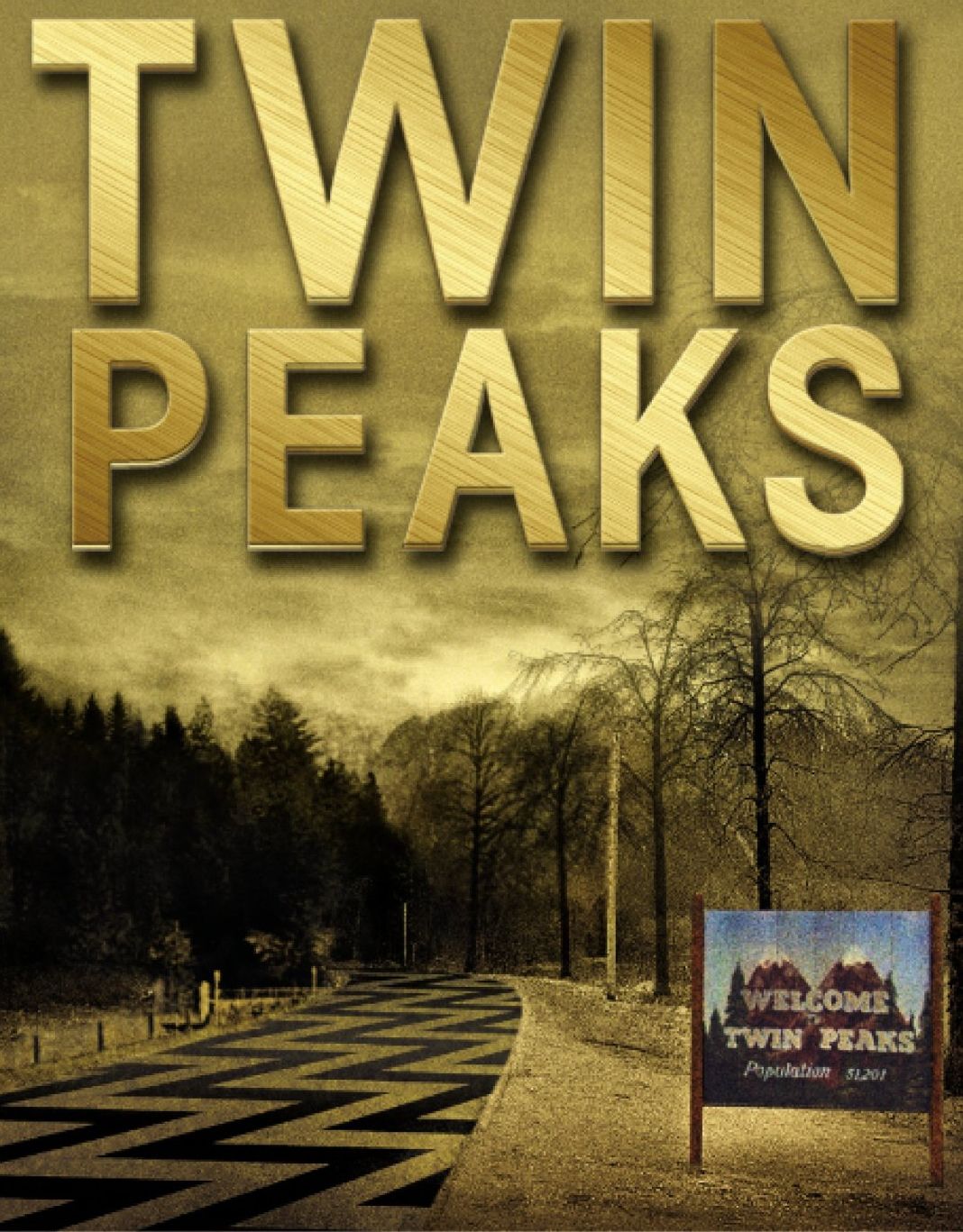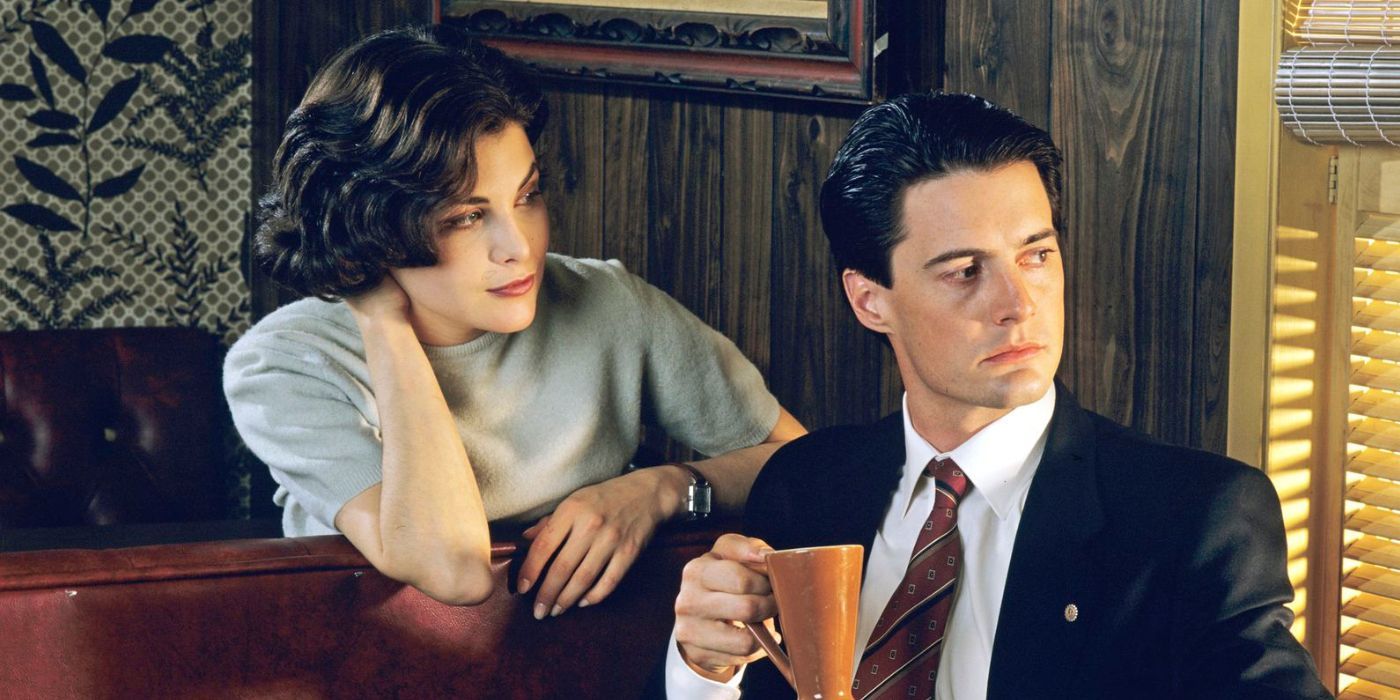The Big Picture
-
Twin Peaks
‘ roots lie in Film Noir, with characters and storylines paying homage to iconic films like Laura and Vertigo. - The names of
Twin Peaks
characters such as Waldo and Maddy are directly inspired by their Film Noir counterparts. - The show’s heroes, like Cooper and Truman, draw inspiration from real-life and cinematic criminal figures, adding depth to their characters.
In 1990, the world was introduced to Twin Peaks as the fictional setting of TV’s biggest mystery, “Who killed Laura Palmer?” The series, created by David Lynch and Mark Frost, stars Kyle MacLachlan as FBI Special Agent Dale Cooper as he falls in love with the quaint Washington town during the investigation of Laura’s (Sheryl Lee) murder. The series changed the landscape of television, with homage to Twin Peaks being paid in seemingly everything from The Simpsons to Psych. But despite its unique charm, Lynch and Frost are very open about the inspirations behind Twin Peaks itself, namely, Film Noir.
Film Noir is a pessimistic genre about the duality of man, often represented by American detective thrillers from the 1940s and 1950s. To witness David Lynch’s love for mid-century Americana and its seedy underbelly, one needs to look no further than his 1986 film, Blue Velvet, which serves as an on-ramp for Lynch’s ideas that eventually led to Twin Peaks. Blue Velvet‘s star (and Lynch’s then-girlfriend), Isabella Rossellini, was even set to play the role of Josie Packard originally, a role ultimately played by Joan Chen. But just like with any good detective thriller, the connections go far deeper than that, with many of Twin Peaks‘ characters named after famous Film Noir characters that came before.

Twin Peaks
An idiosyncratic FBI agent investigates the murder of a young woman in the even more idiosyncratic town of Twin Peaks.
- Release Date
- April 8, 1990
- Creator
- Mark Frost and David Lynch
- Main Genre
- Crime
- Seasons
- 3
Just Like in ‘Twin Peaks’, Laura Is at the Center of It All
Despite dying before the events of Twin Peaks, Laura becomes loved by Cooper and the audience alike through the clues about her troubled past. When Laura’s identical cousin, Maddy, visits, the show reveals who killed Laura by having it happen again, this time to Maddy. Critics were quick to notice the links between Laura Palmer’s story and the 1944 film, Laura, in which an NYPD detective named Mark McPherson (Dana Andrews) falls in love with Laura Hunt (Gene Tierney) while investigating her murder. It’s revealed that Laura is alive, and that the woman who was shot in the face was mistaken for the real Laura. Now, she must be protected from the killer’s next attempt, much like Maddy in Twin Peaks.
In the 1944 film directed by Otto Preminger, Detective McPherson interviews the charismatic newspaper columnist, Waldo Lydecker (Clifton Webb), who eventually becomes the case’s prime suspect. If this name seems familiar to Twin Peaks fans, it’s because “Laura” is not the only name to be borrowed from the 1944 movie. In Twin Peaks, bird claw marks on Laura’s body lead Agent Rosenfield (Miguel Ferrer) to check Lydecker Veterinary Clinic for records of a pet bird; this myna bird is named Waldo. Waldo, who belonged to Jacques Renaut (Walter Olkewicz), was present at the murder of Laura Palmer, but was swiftly shot by Leo Johnson (Eric DaRe). Therefore, the Laura character, Waldo Lydecker, inspired the names of not one, but two characters in Twin Peaks.
Alfred Hitchcock’s ‘Vertigo’ Inspired Maddy’s Storyline in ‘Twin Peaks’
When Sheryl Lee returns to Twin Peaks as Laura’s identical cousin, Maddy Ferguson, it was in reference to more than just Laura. Many fans were quick to note that “Maddy” (or rather, “Madeleine”) was also the name of Kim Novak’s doppelgänger characterin Alfred Hitchcock’s 1958 film, Vertigo. This psychological thriller is based on the 1954 novel, The Living and the Dead, by Boileau-Narcejac, and follows James Stewart as Scottie Ferguson, an acrophobic private eye hired by Gavin Elster (Tom Helmore) to follow his wife, Madeleine. Scotty soon falls in love with Madeleine himself, only to witness her fall from a bell tower and die.

Kyle MacLachlan Ushered in a New Era of Cool Detective in ‘Twin Peaks’
Kyle MacLachlan is a damn fine detective in ‘Twin Peaks.’
Later, Scottie stumbles upon a woman named Judy Barton (also Kim Novak) who bears an uncanny resemblance to the late Madeleine Elster. Scotty soon uncovers that Judy was a mistress of Gavin’s, hired to pose as Madeleine, and lure Scotty to the bell tower. There, Scotty’s acrophobia (and titular vertigo) prevented him from seeing that, at the top, Madaleine had flung the recently-murdered body of the real Madaleine Elster as a staged suicide. Not only does Twin Peaks pay homage to the plot of Hitchcock’s thriller with Maddy’s first name, but also with her last name, which is taken from James Stewart’s “Scotty Ferguson.”
‘Twin Peaks’ Features Easter Eggs for ‘Sunset Boulevard’ and ‘Double Indemnity’
The links between the 1990s series and Film Noir classics don’t end there. Other notable mentions include Twin Peaks‘ insurance agent, Walter Neff (Mark Lowenthal), named after the Fred MacMurray character in Billy Wilder‘s 1944 movie, Double Indemnity. The film follows MacMurray’s insurance salesman as he and Phyllis Dietrichson (Barbara Stanwyck) exploit the double indemnity clause of her husband’s life insurance policy for financial gain. Another link is, of course, David Lynch’s own acting role in Twin Peaks, as FBI Regional Bureau Chief Gordon Cole. It makes sense that Lynch named his own character after one of his favorite films, with Gordon Cole getting his name from Bert Moorhouse’s character in Wilder’s 1950 film, Sunset Boulevard.
As for Twin Peaks‘ hero, Dale Bartholomew Cooper, it’s said that Lynch wanted to shroud the character with a veil of unspoken mystery by naming the special agent after real-life Washington State figure, D.B. Cooper. The real Cooper famously executed “the perfect heist” on a 1971 flight over Washington and is still yet to be caught. As for the show’s other hero, Sheriff Harry S. Truman (Michael Ontkean), he serves his town much like his namesake president did between 1945 and 1953. It should be noted that not only does President Truman’s term relate thematically to the age of the atomic bomb (explored in Twin Peaks: The Return), but it was also in the age of Film Noir. Harry Truman could also be named after Harry R. Truman, a Washington-based bootlegger and local folk hero like D.B. Cooper.
But why would David Lynch opt to name the heroes of Twin Peaks after criminal folk heroes? Likely for the same reason that Film Noir themes are so present in this quirky, fun series. This kind of balance between good and evil is explored throughout the series, even down to its name. Twin Peaks—as a town and as a series—sees good and bad both “peak” within its characters, particularly with Laura Palmer, whose Noir-esque murder triggers the entire show. Just like in Film Noir, duality is at the center of everything, with doppelgängers even appearing from time to time to personify this theme. As Cooper himself says, “I have no idea where this will lead us, but I have a definite feeling it will be a place both wonderful and strange.”
Twin Peaks is available to stream on Paramount+ in the U.S.

